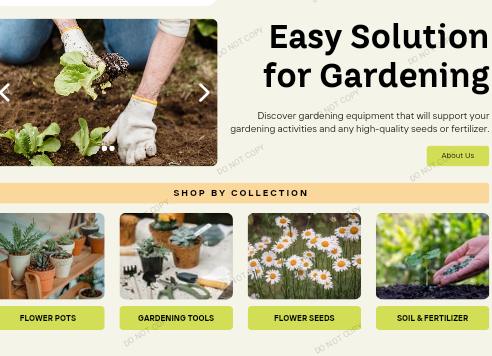How to Garden?
INTRODUCTION:
Gardening is more than just planting seeds and watching them grow; it’s a journey that nurtures both the garden and the gardener. Imagine stepping outside to pick fresh vegetables for dinner or being greeted by a vibrant array of flowers in your yard. The joy of cultivating your own garden is a rewarding experience that connects you to nature, improves your well-being, and brings beauty to your surroundings.
Whether you’re a novice gardener dreaming of a lush vegetable patch or an experienced green thumb looking to perfect your flower beds, learning how to garden effectively can transform your outdoor space. This guide will take you through every step of the gardening process, from selecting the right location and preparing your soil to harvesting your crops and caring for flowering plants. With these tips and techniques, you’ll be well-equipped to create a thriving garden that provides fresh produce, colorful blooms, and endless satisfaction. Let’s dig in and explore the wonderful world of gardening!
1.Early morning watering reduces evaporation and allows plants to dry before evening, preventing disease.
2.Mulching and Weeding: Keeping Your Garden Healthy
Mulch helps retain soil moisture, suppress weeds, and regulate soil temperature. Apply a 2-3 inch layer of organic mulch, like straw or wood chips, around plants. Regular weeding is essential to reduce competition for nutrients and prevent pests.
3.Fertilizing Your Garden: Organic vs. Chemical Options
Fertilizing provides plants with essential nutrients. Organic fertilizers, like compost and fish emulsion, improve soil health over time. Chemical fertilizers offer immediate nutrient availability but can harm soil structure. Choose the best option based on your gardening philosophy and soil needs.
4.Pest Control: Natural and Safe Methods to Protect Your Plants
Protecting your plants from pests is crucial for a healthy garden. Use natural methods like hand-picking pests, introducing beneficial insects, and using insecticidal soap. Avoid harsh chemicals that can harm beneficial organisms and the environment.
5.Companion Planting: Maximizing Growth and Reducing Pests
Companion planting involves growing plants that benefit each other. For example, planting marigolds with tomatoes can repel nematodes. Research compatible plants to maximize growth, improve soil health, and reduce pests naturally.
6.Caring for Flowering Plants: Ensuring Blooms All Season Long
To keep your flowers blooming, deadhead spent flowers, and provide regular feeding with a balanced fertilizer. Water consistently and ensure they receive adequate sunlight. Prune as needed to maintain shape and encourage new growth.
7.Harvesting Vegetables: Knowing When and How to Pick
Harvesting at the right time ensures the best flavor and texture. Pick vegetables like tomatoes and peppers when they are fully ripe. For continuous production, harvest regularly. Use clean, sharp tools to avoid damaging the plants.
8.Storing and Preserving Your Harvest: Tips for Long-Term Storage
Proper storage extends the life of your harvest. Store root vegetables in a cool, dark place. Blanch and freeze leafy greens. Consider canning, drying, or fermenting to preserve excess produce for later use.
9.Seasonal Gardening: Adapting to Different Weather Conditions
Adapt your gardening practices to the seasons. In spring, prepare the soil and start planting. In summer, focus on watering and pest control. Fall is for harvesting and preparing for winter. Use season extenders like row covers to prolong the growing season.
10.Indoor Gardening: Growing Vegetables and Flowers Indoors
Indoor gardening is a great option for those with limited outdoor space. Use containers with proper drainage and grow lights to provide adequate light. Choose compact varieties of vegetables and flowers suited for indoor conditions.
11.Troubleshooting Common Gardening Problems: Solutions and Advice
Gardening comes with challenges like pests, diseases, and nutrient deficiencies. Identify issues early by regularly inspecting your plants. Use organic solutions and proper cultural practices to address problems and maintain plant health.
11.Conclusion: Enjoying the Fruits and Flowers of Your Labor
Gardening is a fulfilling activity that offers numerous rewards. By following these tips on how to garden, you can enjoy a bountiful harvest of vegetables and beautiful flowers. Embrace the journey, learn from each season, and savor the results of your hard work.
12.FAQs
Q: How often should I water my garden?
A: Water deeply once or twice a week, depending on weather conditions.
Q: What are some beginner-friendly vegetables to grow?
A: Lettuce, radishes, and green beans are great choices for beginners.
Q: How can I improve poor soil quality?
A: Add organic matter like compost or aged manure to improve soil structure and fertility.
Q: Is it better to start from seeds or buy seedlings?
A: It depends on your experience level and the time you can dedicate. Seeds are cheaper but require more care; seedlings are more convenient but cost more.
Q: How do I keep pests out of my garden?
A: Use natural methods like companion planting, beneficial insects, and organic sprays to control pests.



